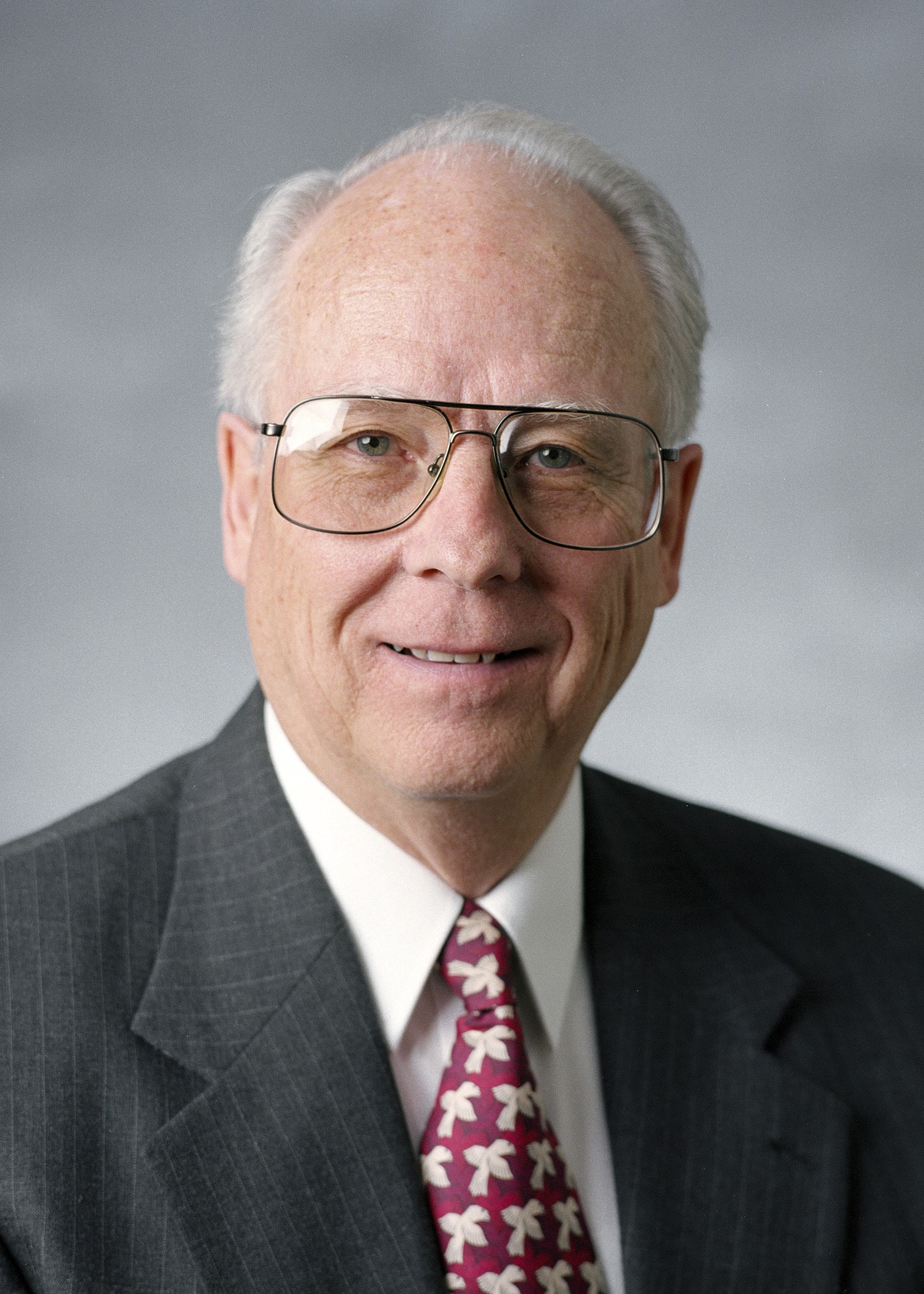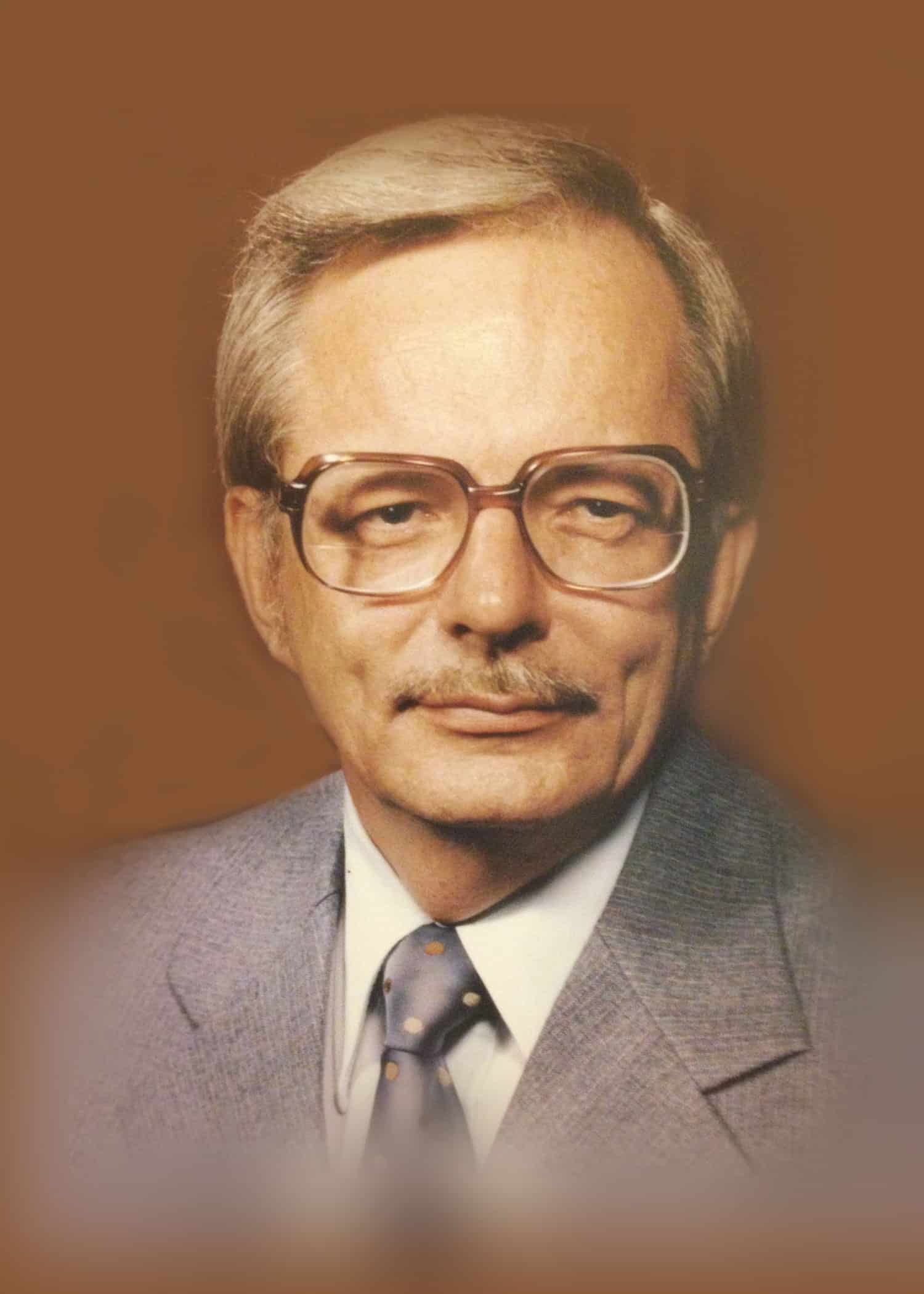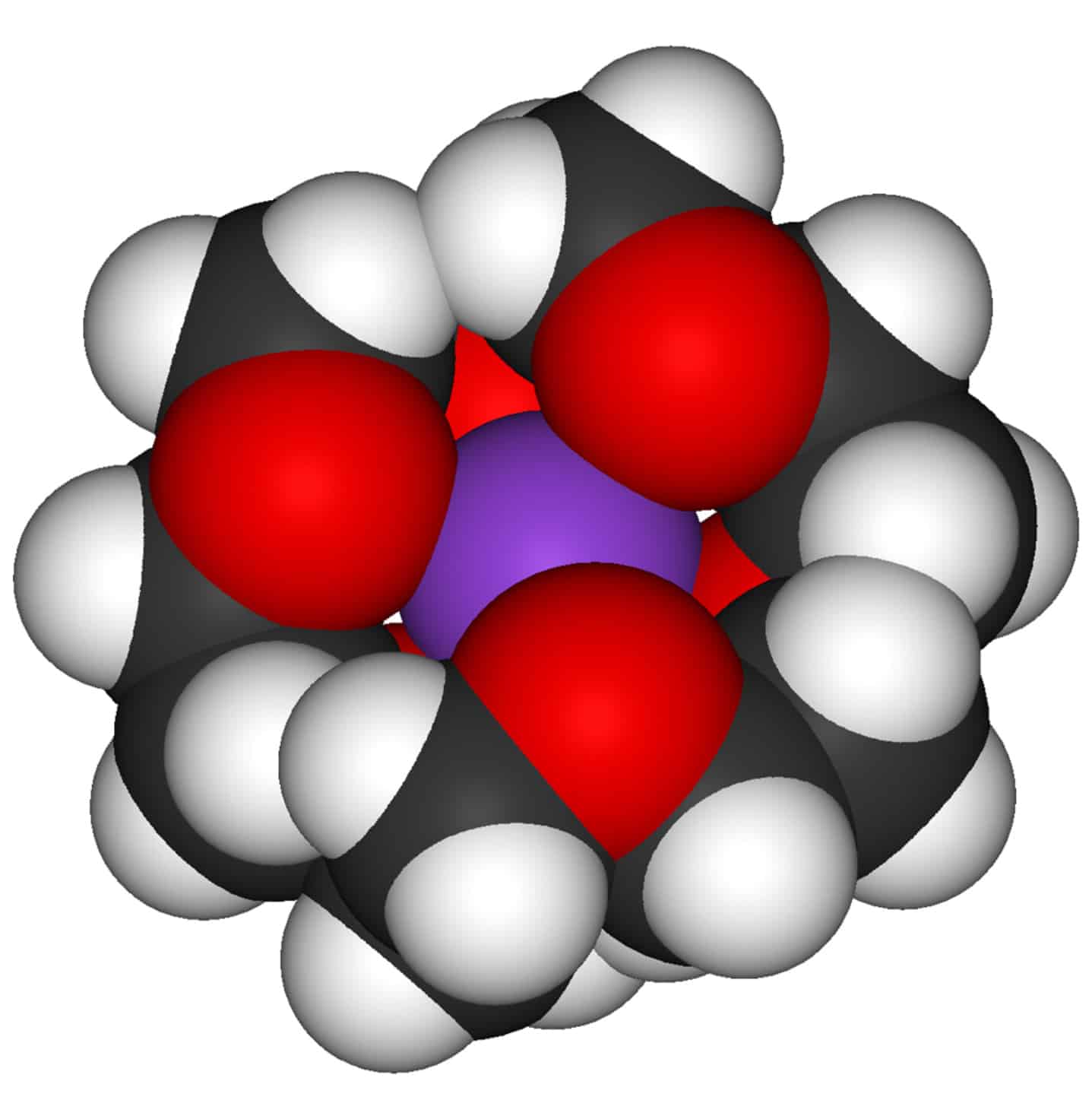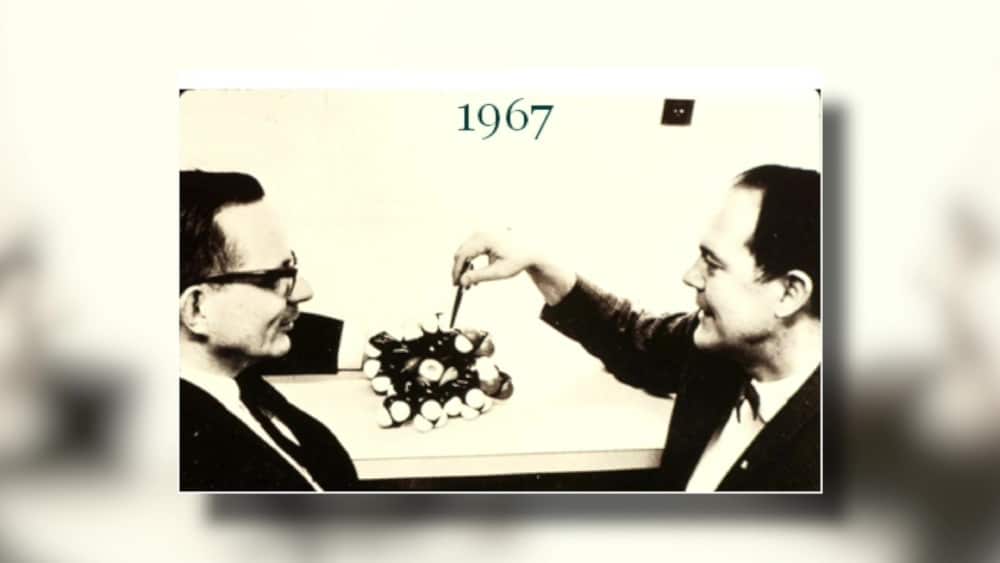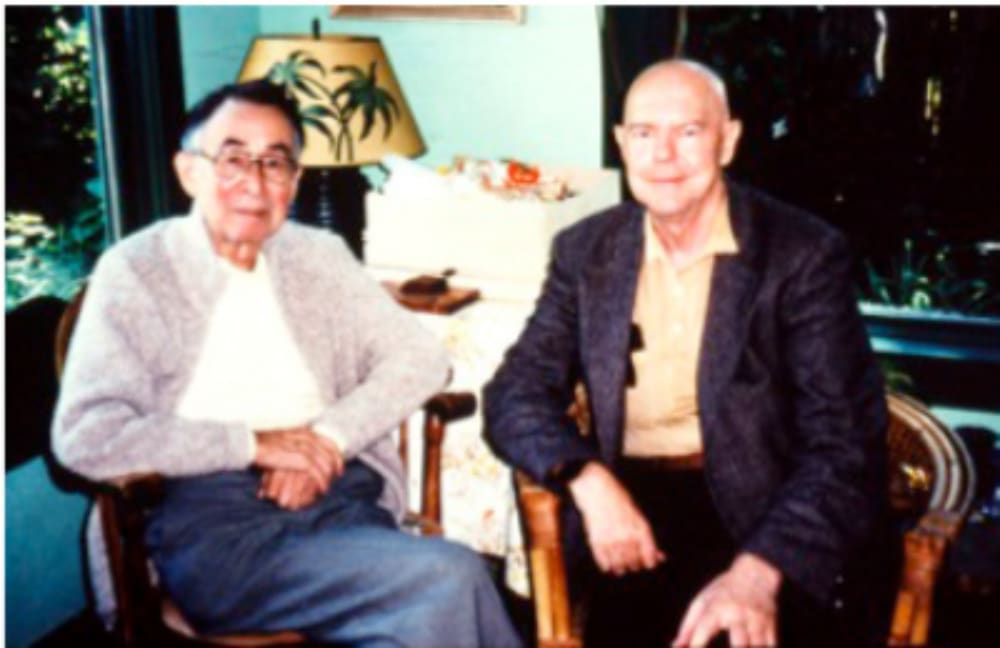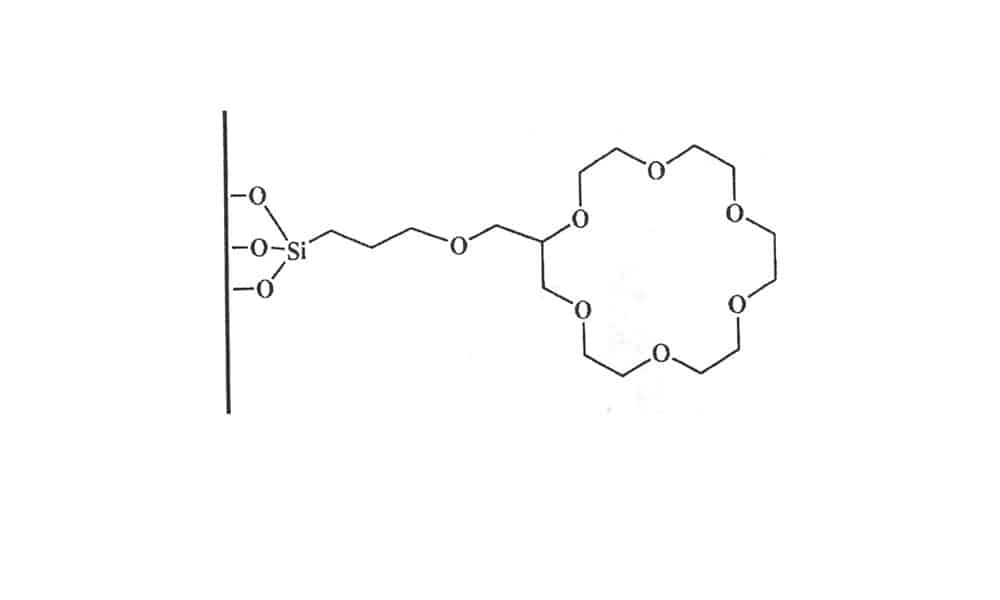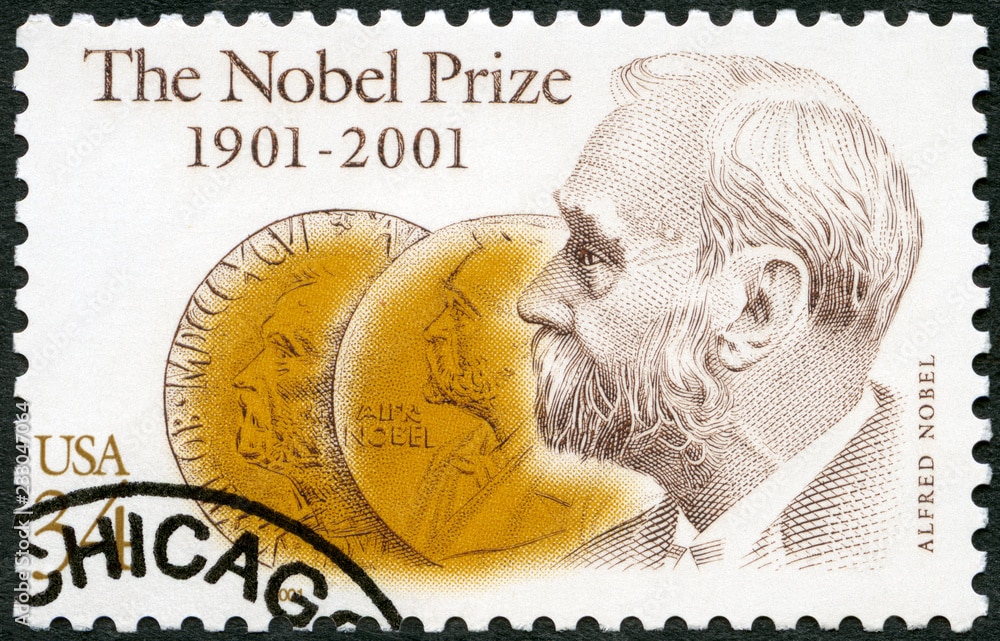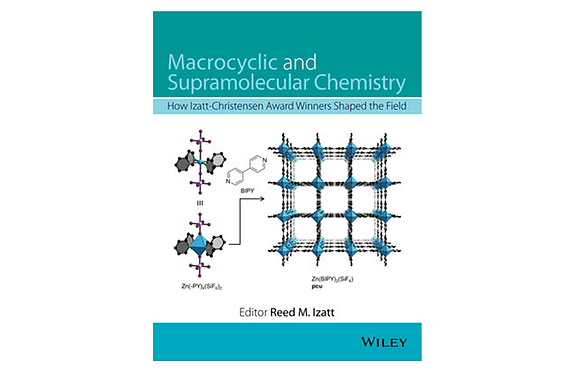Dr. Izatt received a B.S. degree in chemistry at Utah State University (1951) and a Ph.D. degree in chemistry at The Pennsylvania State University (1954.) He did postdoctoral work at Mellon Institute of Industrial Research (now Carnegie Mellon University) in Pittsburgh, PA (1954-1956.) He joined the chemistry faculty at Brigham Young University in 1956. Together with two colleagues, Dr. Jerald S. Bradshaw and Dr. James J. Christensen, Dr. Izatt developed a world-class research program in molecular recognition and calorimetry. Together with his colleagues and students, he published over 550 peer-reviewed articles that have garnered over 35,000 worldwide citations. His academic-research career at BYU spanned 52 years (1956-2008), where he directed over 60 graduate and over 100 undergraduate students in research projects. He was a recipient of an NIH Career Development Award from 1967-1972 and was a Fellow of the American Association for the Advancement of Science.
Learn more about Dr. Izatt’s life in this press release.
Dr. Izatt received a B.S. degree in chemistry at Utah State University (1951) and a Ph.D. degree in chemistry at The Pennsylvania State University (1954.) He did postdoctoral work at Mellon Institute of Industrial Research (now Carnegie Mellon University) in Pittsburgh, PA (1954-1956.) He joined the chemistry faculty at Brigham Young University in 1956. Together with two colleagues, Dr. Jerald S. Bradshaw and Dr. James J. Christensen, Dr. Izatt developed a world-class research program in molecular recognition and calorimetry. Together with his colleagues and students, he published over 550 peer-reviewed articles that have garnered over 35,000 worldwide citations. His academic-research career at BYU spanned 52 years (1956-2008), where he directed over 60 graduate and over 100 undergraduate students in research projects. He was a recipient of an NIH Career Development Award from 1967-1972 and was a Fellow of the American Association for the Advancement of Science.
Learn more about Dr. Izatt’s life in this press release.
Dr. Bradshaw received a B.S. degree from the University of Utah. After four years serving as an officer in the U.S. Navy, Jerald studied chemistry at U.C.L.A., where he received a Ph.D. degree in chemistry working with Dr. Donald J. Cram who later received the 1987 Nobel Prize in chemistry. Following employment at Chevron Research Company, he joined the BYU Chemistry Faculty in 1966. He spent sabbatical leave at the University of Sheffield, England in 1972-1973, with J. Fraser Stoddart, who received the Nobel Prize in 2016; at the University of Ljubljana, Slovenia in 1972-1973; and at James Cook University, Townsville, Australia in 1988. He mentored 19 Ph.D. students, 21 M.S. students, and over 100 undergraduate students in chemical research projects. He and his students had over 400 peer-reviewed publications. Dr. Bradshaw retired from BYU in 2000.
Dr. Bradshaw received a B.S. degree from the University of Utah. After four years serving as an officer in the U.S. Navy, Jerald studied chemistry at U.C.L.A., where he received a Ph.D. degree in chemistry working with Dr. Donald J. Cram who later received the 1987 Nobel Prize in chemistry. Following employment at Chevron Research Company, he joined the BYU Chemistry Faculty in 1966. He spent sabbatical leave at the University of Sheffield, England in 1972-1973, with J. Fraser Stoddart, who received the Nobel Prize in 2016; at the University of Ljubljana, Slovenia in 1972-1973; and at James Cook University, Townsville, Australia in 1988. He mentored 19 Ph.D. students, 21 M.S. students, and over 100 undergraduate students in chemical research projects. He and his students had over 400 peer-reviewed publications. Dr. Bradshaw retired from BYU in 2000.
Dr. Christensen received B.S. (1953) and M.S. (1956) degrees in chemical engineering from the University of Utah. He received a Ph.D. degree in chemical engineering at the Carnegie Institute of Technology (now Carnegie Mellon University) in 1958. He joined the Chemical Engineering Department at Brigham Young University in 1957 and served as Department Chair from 1967-1972. He was a visiting scientist at Oxford University in 1965 and at the Polytechnical Institute in Mexico City in 1973. He was a recipient of an NIH Career Development Award from 1967-1972. Dr. Christensen was a professor of chemical engineering at BYU from 1957 until his unexpected death in 1987. He and his students had over 200 peer-reviewed publications.
Dr. Christensen received B.S. (1953) and M.S. (1956) degrees in chemical engineering from the University of Utah. He received a Ph.D. degree in chemical engineering at the Carnegie Institute of Technology (now Carnegie Mellon University) in 1958. He joined the Chemical Engineering Department at Brigham Young University in 1957 and served as Department Chair from 1967-1972. He was a visiting scientist at Oxford University in 1965 and at the Polytechnical Institute in Mexico City in 1973. He was a recipient of an NIH Career Development Award from 1967-1972. Dr. Christensen was a professor of chemical engineering at BYU from 1957 until his unexpected death in 1987. He and his students had over 200 peer-reviewed publications.
The Founders: Quest for Industrial Applications of High Selectivity
In the mid-twentieth century, a seminal Question posed by a Nobel Laureate in Physics, a serendipitous Discovery by an industrial chemist and future Nobel Laureate in Chemistry, and a deep Understanding of the principles governing selective metal complexation by the Founders paved the journey to commercialization of highly selective separations using MRT™. But the quest is not yet finished and the path is not yet forged. The voyage has really just begun.
How one molecule recognizes another (“Molecular Recognition”) has long intrigued scientists. The quest to arrange atoms in a molecule in such a way as to achieve predesigned, predictable interaction of that molecule with species of interest has unfolded over the past half century. Tremendous growth in the field of Molecular Recognition has resulted, but it all started with a key serendipitous discovery by Nobel Laureate Charles Pedersen. Immediate recognition of the importance of Pedersen’s discovery by IBC’s Founders (Izatt, Bradshaw and Christensen) led to a series of foundational discoveries making possible the industrial-scale application of Molecular Recognition. American Chemical Society awards have gone to IBC’s Founders (1996-Izatt, Bradshaw) and key scientists (2020-Bruening, Krakowiak). Two Nobel Prizes in Chemistry have been awarded to six of the original researchers in the field of Molecular Recognition (1987-Pedersen, Lehn, Cram The Nobel Prize in Chemistry 1987; and 2016-Stoddart, Feringa, Sauvage The Nobel Prize in Chemistry 2016.
Quest to ‘Arrange…Atoms the Way We Want Them’

"Richard Feynman (Nobel Prize, Physics, 1965)" may have had Molecular Recognition in mind when he made the insightful comment “what would the properties of materials be if we could really arrange the atoms the way we want them? I can’t see what would happen, but I can hardly doubt that when we have some control of the arrangement of things on a small scale, we will get an enormously greater range of possible properties that substances can have, and of different things that we can do” (Feynman, Engineering and Science, 1969, 23, 22-36.)
Discovery of Cyclic Polyethers: Novel Molecules for Selective Metal Complexation
Following World War II, there was an upsurge in the use of synthetic organic chemistry to do exactly what Feynman suggested. One of the greatest achievements of this era was the serendipitous discovery of cyclic polyethers by Charles J. Pedersen (Nobel Prize, Chemistry, 1987) at duPont after observing some unexpected “goo” that had formed in a flask overnight. In 1967, Pedersen published a groundbreaking paper describing the synthesis and characterization of over 100 new cyclic polyether molecules and some of their unexpected metal complexation properties (Pedersen, C.J. 1967, Journal of the American Chemical Society, 89, 7017-7036.) For example, by varying the diameter of the cyclic polyether cavity, selective complexation of different individual alkali metal ions became possible, a remarkable achievement at the time. The ability to “arrange the atoms the way we want them” to accomplish specific goals became a real possibility.
Discovery and Formulation of Principles Governing Selective Metal Complexation
Dr. Reed M. Izatt and Dr. James J. Christensen were the first non-duPont scientists to visit Pedersen after his paper was published. This visit in February 1968 resulted in them acquiring several grams of one of Pedersen’s newly synthesized crown ethers. Dr. Izatt and Dr. Christensen then measured equilibrium constants for the interaction of this crown ether with alkali metal ions. The resulting paper published by them was among the first to quantify the remarkable and unusual metal complexing properties of crown ethers (Izatt, et al. Science, 1969, 164, 443-444.) This visit began a life-long friendship between these groups.
Organic chemists in increasing numbers began to synthesize macrocyclic compounds following Pedersen’s initial publication, and chemists trained in inorganic and physical chemistry studied the interactions of these host compounds with guest metal ions. Molecular Recognition became a topic of wide interest. The Founders at BYU launched one of the most successful global programs in synthesizing macrocyclic compounds and measuring thermodynamic quantities for their interaction with a variety of metal ions. They observed in one of their first publications on the subject that “synthetic macrocycles represent an intriguing new area of coordination chemistry, the systematic study of which should lead to many interesting and useful chemical applications in the field of metal complexation in solution” (Christensen, et al. Science 1971, 174, 459-467.) The Founders formulated principles that defined Molecular Recognition and led to the synthesis of a wide range of organic host compounds that were used to study highly selective guest metal transport in various liquid membrane systems, a step toward making Molecular Recognition practical.
Discovery of Selective and Quantitative Metal Separation Systems
In 1988, the Founders announced an important advance in separation science that led directly to the spin-off of IBC as an independent metal separations company and the commercialization of Molecular Recognition Technology™. Published in Izatt, et al., Analytical Chemistry, 1988, 60 (17), 1825-1826, DOI: 10.1021/ac00168a035, the introduction to this advance was phrased as follows: “Sir, The recent attachment of macrocycles such as crown ethers to silica gel via a hydrocarbon-type linkage has made possible the design of systems capable of the selective and quantitative removal of cations from aqueous solutions. These systems can be operated indefinitely without loss of the expensive macrocycle and maintain the selectivity shown toward metal ions in aqueous solution by the particular macrocycle in the free state.”
Establishment of IBC Advanced Technologies, Inc.
The establishment of IBC by the Founders in 1988, marked the transition from the theoretical study of Molecular Recognition to the practical application of Molecular Recognition Technology™ on an industrial scale. The ability to selectively separate or interact with a target metal or other molecule, even when present in a mixture of very similar species, requires detailed knowledge of the target metal’s properties at the atomic level. Structure specific molecules or ligands can then be designed, industrially manufactured, and incorporated into engineered systems to accomplish the desired highly selective separation or other interaction in real-world applications.
Molecular Recognition: American Chemical Society and Nobel Prize Winning Chemistry
The serendipitous discovery by Pedersen of cyclic polyethers led to arranging atoms “the way we want them,” discovering and quantifying the principles of how one molecule recognizes another and applying that knowledge to highly selective industrial separation systems. Pedersen’s humble wish was that his monumental discovery would, “…in some small way, mark [his] footprint on earth.” From such discernment and humility, an entirely new field of chemistry was born. Much is owed to the early pioneers in the study of Molecular Recognition. Their insights and diligence have bestowed a great gift on humanity. Numerous prestigious awards commend their achievements and provide the context for tremendous discoveries yet to be made by future generations in this highly fertile field of Molecular Recognition.
American Chemical Society: Honoring the Industrial Application of Nobel Prize-Winning Technology
Dr. Reed M. Izatt and Dr. Jerald S. Bradshaw, two of the three Founders of IBC (Dr. James J. Christensen died unexpectedly in 1987) received the National Separations Science and Technology Award from the American Chemical Society in 1996 “For advancing the separation science of metals and for new technology to forward industrial-scale recovery of metals from aqueous solutions.”
The American Chemical Society recognized two outstanding IBC scientists in 2020 when Dr. Ronald L. Bruening and Dr. Krzysztof E. Krakowiak (former students of Dr. Izatt and Dr. Bradshaw, respectively) won the Industrial and Engineering Chemistry Division Fellow Awards for their groundbreaking achievements in the industrialization of MRT™ systems across a broad range of global markets and applications.
The Nobel Prize: Recognizing the Power of "Arranging atoms the way we want them"
The 1987 Nobel Prize in Chemistry; was shared by Charles J.Pedersen, Jean-Marie Lehn, and Donald J.Cram, for the “development and use of molecules with structure-specific interactions of high selectivity.”
In a personal letter written by Pedersen near the time of his death in 1989 to Professor Eiichi Kimura in Japan, he stated, “Most men achieve ‘Immortality’ through their progeny. I have no child of my own. Possibly, the crown ethers will serve, in a small way, to mark my footprint on earth.” Time has verified the fulfillment of this hope. Pedersen’s serendipitous discovery of crown ethers and his recognition of their unexpected metal complexation properties had a disruptive effect on the emerging science of Molecular Recognition. Read an account of Pedersen’s life and achievements written by Reed M. Izatt, a close friend and associate for many decades.
The 2016 Nobel Prize in Chemistry was shared by Sir J. Fraser Stoddart, Ben Feringa, and Jean-Pierre Sauvage for designing and synthesizing “molecular machines,” i.e., molecular arrangements that mimic macro level machine action. Dr. Jean-Pierre Sauvage (1991) and Sir J. Fraser Stoddart (1993) were early recipients of the International Izatt-Christensen Award in Macrocyclic and Supramolecular Chemistry.
The Founders: Deeply Committed to Growing the Next Generation of Scientists, Engineers and Entrepreneurs
Celebrating Excellence:
Read the book edited by Dr. Reed M. Izatt which features chapters by recipients of the International Izatt-Christensen Award from 1991-2016
International Izatt-Christensen (I-C) Award in Macrocyclic and Supramolecular Chemistry, Sponsored by IBC
The International I-C Award recognizes excellence in macrocyclic and supramolecular chemistry. This annual Award recognizes two of the co-founders of IBC who organized the first Symposium on Macrocyclic Chemistry at Brigham Young University (BYU) in 1977. The Award is presented at the International Symposium on Macrocyclic and Supramolecular Chemistry, which is held annually at worldwide locations. The first I-C Award was presented in 1991 to Dr. Jean-Pierre Sauvage at the annual symposium meeting in Sheffield, United Kingdom. Dr. Sauvage and a second recipient in 1993, Sir J. Fraser Stoddart, received the Nobel Prize in Chemistry in 2016.
International Izatt-Christensen (IC) Award in Macrocyclic and Supramolecular Chemistry, sponsored by IBC and presented at annual meetings of the International Symposium on Macrocyclic and Supramolecular Chemistry. Recipients of the Award and their professional affiliation are given.
IC Award Winners
- 2022 Jonathan R. Nitschke, University of Cambridge, U.K.
- 2021 Ivan Huc, Ludwig-Maximilians-University of Munich, Germany
- 2020 Mitsuhiko Shionoya, University of Tokyo, Japan
- 2019 Luisa De Cola, University of Strasbourg, France
- 2018 Philip A. Gale, University of Sydney, Australia
- 2017 Harry L. Anderson, University of Oxford, U.K.
- 2016 Hanadi Sleiman, McGill University, Canada
- 2015 Paul D. Beer, University of Oxford, U.K.
- 2014 Mir Wais Hosseini, University of Strasbourg, France
- 2013 Eric V. Anslyn, University of Texas at Austin, U.S.A.
- 2012 Kimoon Kim, Pohang University of Science and Technology, South Korea
- 2011 Andrew D. Hamilton, University of Oxford, U.K.
- 2010 Luigi Fabbrizzi, University of Pavia, Italy
- 2009 Omar M. Yaghi, University of California at Berkeley, U.S.A.
- 2008 Akira Harada, Osaka University, Japan
- 2007 David A. Leigh, University of Edinburgh, U.K.
- 2006 Roeland J.M. Nolte, Radboud University Nijmegen, The Netherlands
- 2005 Kenneth N. Raymond, University of California at Berkeley, U.S.A.
- 2004 Makoto Fujita, The University of Tokyo, Japan
- 2003 Jeremy K.M. Sanders, University of Cambridge, U.K.
- 2002 C. David Gutsche, Texas Christian University, U.S.A.
- 2001 Jonathan L. Sessler, University of Texas at Austin, U.S.A.
- 2000 Jerry L. Atwood, University of Missouri at Columbia, U.S.A.
- 1999 Fritz Vögtle, University of Bonn, Germany
- 1998 Seiji Shinkai, Kyushu University, Japan
- 1997 Alan M. Sargeson, Australian National University
- 1996 George W. Gokel, Washington University, St. Louis, Missouri, U.S.A.
- 1995 David N. Reinhoudt, University of Twente, The Netherlands
- 1994 Daryle H. Busch, University of Kansas, U.S.A.
- 1993 J. Fraser Stoddart, Sheffield University, U.K.
- 1992 Eiichi Kimura, Hiroshima University, Japan
- 1991 Jean-Pierre Sauvage, University of Strasbourg, France
Inspiring Greatness:
The annual Endowed Reed M. Izatt and James J. Christensen Lectureship (Lectureship) is supported by an endowment at Brigham Young University (BYU) created by Dr. Reed M. Izatt, a co-founder of IBC. The purpose of the Lectureship is to bring lecturers of international renown to BYU where they interact with students and faculty and present two lectures, one scientific and the other of interest to an educated public. Past lecturers include Nobel Prize winners and other outstanding chemists and engineers from academia and industry. The endowment was created by generous contributions from the families of Dr. Reed M. Izatt and Dr. James J. Christensen, former students of these professors, friends, and associates. IBC is one of these contributors.
Endowed Reed M. Izatt and James J. Christensen Lectureship. Lecturers and their professional affiliation are given.
Lecturers
- 2022 Richard D. Smith, Pacific Northwest National Laboratory, Richland, Washington
- 2020 Thomas F. Edgar, University of Texas at Austin
- 2019 Geraldine Richmond, University of Oregon
- 2017 R. Graham Cooks, Purdue University
- 2017 Franklin (Lynn) M. Orr, Stanford University
- 2015 Alexis T. Bell, University of California at Berkeley
- 2014 Mario R. Capecchi, University of Utah
- 2013 Robert S. Langer, Massachusetts Institute of Technology
- 2012 Richard N. Zare, Stanford University
- 2010 Robert Byron Bird, University of Wisconsin at Madison
- 2009 George M. Whitesides, Harvard University
- 2009 Gabor A. Somorjai, University of California at Berkeley
- 2007 J. Fraser Stoddart, Northwestern University
Creating the Future:
The Endowed Reed M. Izatt and James J. Christensen Faculty Excellence in Research Award (Award) is supported by an endowment at Brigham Young University (BYU) created by Dr. Reed M. Izatt, a co-founder of IBC. The purpose of this annual Award is to recognize research accomplishments of faculty members in the Department of Chemistry and Biochemistry and Department of Chemical Engineering. The endowment was created by generous contributions from the families of Dr. Reed M. Izatt and Dr. James J. Christensen, former students of these professors, friends, and associates. IBC is one of these contributors.
Endowed Reed M. Izatt and James J. Christensen Faculty Excellence in Research Award. Recipients of the Award are from the Department of Chemistry and Biochemistry and the Department of Chemical Engineering at Brigham Young University.
Award Winners
- 2022 John N. Harb
- 2021 Daniel E. Austin
- 2019 Larry L. Baxter
- 2018 Brian F. Woodfield
- 2017 William G. Pitt
- 2016 Barry M. Willardson
- 2015 Thomas H. Fletcher
- 2014 David V. Dearden
- 2012 Adam T. Woolley
- 2010 Paul B. Savage
- 2008 Milton L. Lee



